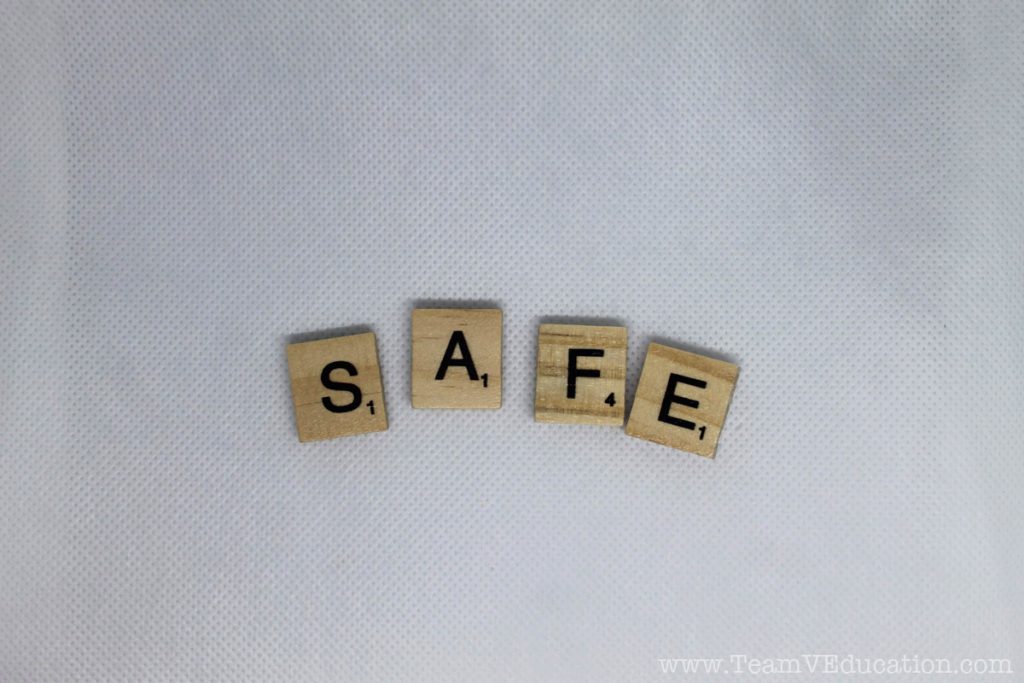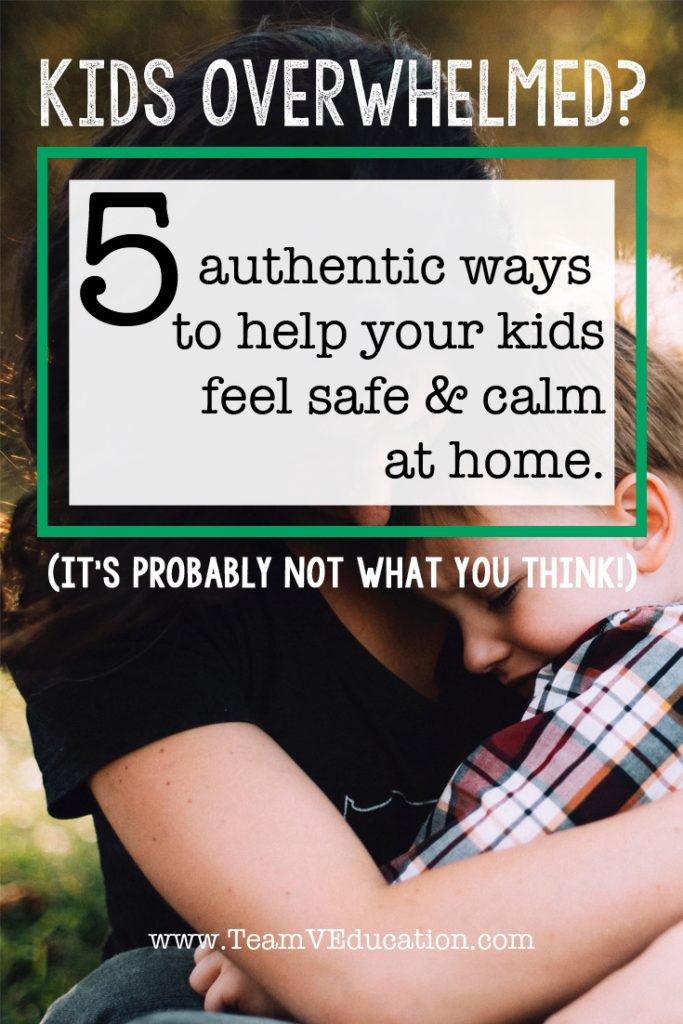Authentic Ways to Help Your Kids Feel Safe and Calm at Home
“This right here: this is our safe space. You are safe here and we always want you to feel that way. This is where you can be honest and vulnerable. You can ask questions and make mistakes. We choose to treat one another with such love and respect, that home is always safe.”
We were managing another growing pain: siblings learning to love one another.
It was a tricky situation where it seemed that all were at fault and we needed to carefully speak to each child individually, hearing their angle and listening to their pain points and ultimately their needs.
But our home is our safe space, and in that moment, we were learning to empathize with one another. We were learning to build each other up.
We were also learning to tell the truth – the first time. (Not after mommy and daddy pry it out of you).
We realize more and more as our children grow and mature that our home needs to be that place where it’s safe. It is a sanctuary. When they have a bad day ‘out there,’ we ultimately want them to breathe a deep sigh of relief when they come home. Our goal is for them to know without a doubt that they are loved and understood, and can feel safe and calm at home.
To our children,
our home is a retreat
from the world around them.
How do we do that?
How do we model the positive behaviour that ensures our home truly feels safe and comforting?
We begin with the one thing we can easily change: our own behaviour.
Firstly, Call Out Your Own Parenting Pitfalls and Work to Overcome Them
Parenting is a journey and we work daily to better ourselves for the sake of our children. We think that you can too!
Shouting, degrading words, limiting comments, sly remarks, etc – the majority of us parents are not exempt from these errors. We’ve caught ourselves tired and overwhelmed, snapping at our children, only to regret our decision after the fact.
We’ll let you in on a little secret: you have the power to stop this behaviour!
You get to choose how you react in difficult situations. Is it easy? No way! Is it worth it? Absolutely. Will you make mistakes along the way? Probably. And when you do, you have the perfect opportunity to demonstrate repentance and forgiveness.
Remember, our goal is to make our children feel safe and calm at home.
Part of being an amazing parent is learning from your mistakes. You get to say to your kids: “I’m sorry. I messed up. I didn’t mean to react the way that I did. I know that I hurt your feelings when I said that to you. Will you forgive me?” That right there, that is beautiful.
Our goal here is to create an environment of mutual respect.
If your actions are positive and loving, and you extend grace again and again and again, your children will grow to feel safe and protected. And they too will extend grace when you are having a bad day.
Model the Behaviour You Expect
Related: Motivational Quotes to Inspire Students, Teachers, and Parents
Take a moment to write down some characteristics that are important to you and your family.
Here are some examples to consider: honesty, trustworthiness, hardworking, respect, gracious, self-starting, team player, etc.
Show your children what you value by the way you act around the house. Demonstrate your honesty and respectful nature. Perhaps you choose to avoid speaking about others since it feels like gossip. Maybe you find yourself grumbling about tidying up at the end of the day. You don’t have to! You can choose to feel joyful in the mundane.
Your children will notice.

And because you are modelling great values, your children will feel safe and loved.
Here’s a bonus tip for the ‘keen’ mom or dad: Directly say positive things about your significant other (or about a friend or family member) to your children.
Here is what it might sound like:
- “I love how Grandma cares so much about finding you the perfect gift at Christmas.”
- “It really makes me feel loved when your daddy helps me in the kitchen.”
- “Did you see how tired mommy was when she came home from work? She must have had a difficult day. I love how much she cares about us to work so hard.”
Do you see what we did there? Not only are we modelling the behaviour of praising others and looking for the good in every situation, we are also pointing out specific characteristics that we observe and value in others.
Compounded over time, these positive comments will do a great deal of good!
Develop a Family Motto
Next, take those characteristics and values that you wrote down in the previous section, and turn them into a motto that you and your children can live up to!
Scott and I met at cross-country practice in high school. When we reconnected after university, our first date was going for a jog together. Since we love sports and competition, our family motto became:
“Team Vanderlee, we run up hills.”
This motto is both literal and figurative. We all literally run up the hills together when we go for hikes as a family. This is also representative of our desire for our children to try hard things.
What words represent your family? What are you proud of? What do you want your children to consider as they grow? Create a family motto that encompasses your beliefs and values. If your children are older, they might even be interested in helping.
In creating a family motto, you are fostering a ‘team’ atmosphere. Everyone in your family subscribes to the motto and feels connected to a common theme or goal. This connection again creates an environment where your children feel safe and calm. They are an important part of your family unit!
Talk Privately About Difficult Situations and Problems that Arise

Take the time to talk about behaviours you see in your children that do not line up with your family values.
But before you strike up an in-depth conversation at your next restaurant meeting, let’s get one thing clear:
Discuss difficult things in private.
We have made the mistake before of bringing up a sensitive topic in front of others. We found that by doing this, we shattered our child’s trust. Please learn from our mistake and speak privately about growing matters and discipline issues.
You will do everyone a favour by speaking quietly, away from others (even siblings) about a behaviour that needs changing. In the presence of others, your child may become resentful and reactive. But in the safety of your home and in a private conversation, you can genuinely talk about the behaviour that doesn’t align with your family vision or motto.
You can calmly discuss how change needs to begin in the heart.
This discussion then offers opportunity to discuss what your child needs from you to support them, and what you expect from them in the future. Talk about how this behaviour is important for their development. Remember: Our goal is for our home to be a safe space.
Our children get to make mistakes at home. Our role is to guide them and love them as they grow to become good humans! Home is the safe space where mistakes are made, discussions are had, and change is seen.
Lastly, Hug it Out
This is pretty standard in our home. The kids argue and we take a break to chat about everyone’s view of the situation. Then we hug it out.
Sometimes we call it a “power up.” We could go into the science of physical touch, but for the sake of this article, we’ll stick with a “power up.”
We often find that a hug solidifies what we’ve chatted about. It seals the deal. And ultimately, it creates that family peace we’re chasing after. Some children require physical touch to feel safe and calm.

Home is To Be Their Safety Net
While the days feel desperately long sometimes, our children are only in our care for a short time. This is our time to grow as parents, to impart our love and knowledge, and to create a safe space for them to come home to.
Personally, we want to provide ample space for our children to make mistakes. We constantly tell them it is okay to make mistakes, and home is where they are especially okay.
“This right here: this is our safe space. You are safe here and we always want you to feel that way. This is where you can be honest and vulnerable. You can ask questions and make mistakes. We choose to treat one another with such love and respect, that home is always safe.”
We make mistakes at home
so that we can work on them together.
We have this amazing gift as parents to journey
with our children as they grow into good little humans!
There you have it! These are five strategies that we use daily to help our kids feel safe and calm at home. If you can add any words of wisdom to this article, please share with our community below.
Let’s finish with a quick summary:
We are striving to create a home that our children feel safe in – it’s a sanctuary from the world around them. Firstly, call out your own parenting pitfalls and work to overcome them. Our children’s safety begins with feeling loved and known by their parents. Next, model the behaviour you expect. It all starts with us! Choose characteristics and values that represent your family. Develop a family motto. Privately talk about difficult situations and problems that arise. Lastly, hug it out.
You might also enjoy:

Sorry, the comment form is closed at this time.